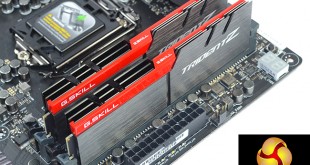
Only the highest of memory speeds are worthy of G.Skill's Trident series branding, so it should come as little surprise to see that the starting point for the vendor's Trident Z DDR4 sets is a lofty 2800MHz. Today we are taking a look at a dual-channel 16GB Trident Z kit clocked at 3400MHz with a CAS Latency of 16.
Styling of G.Skill's Trident Z modules focuses on an eye-catching design based around a functional heatspreader. The reason that I point out that functional heatspreader is because the modules are intended for overclockers who are likely to push their voltages to the point that additional cooling is a benefit.
Speaking of overclockers, G.Skill's flagship memory modules ship with a rated speed of up to 4266MHz, making their highest-speed part the fastest consumer kit on the market.
Capacities available through the Trident Z brand range from 8GB kits (2x4GB) all of the way up to 64GB sets (4x16GB). A notable omission is an eight-module 128GB kit, although this is understandable given G.Skill's focus on the Z170/Skylake platform for Trident Z memory.
G.Skill colours one side of the heatspreader black, with the other being a metallic grey. This creates a unique contrast which complements the red strip breaking through the centre. While red and black styling is undeniably popular for gaming enthusiasts, it may not be to everybody's taste. There does seem to be provision for removing the red plastic strip, however it isn't particularly easy judging by my brief attempts.
To the disappointment of some potential buyers, and to the joy of others, there are no in-built LEDs on the Trident Z memory modules. But for users who like LEDs in their system, the finned heatspreader design may help to bounce light in various directions to create a unique glow. Bonus points to G.Skill for the use of a black PCB, no matter how little is actually visible.
A very hefty aluminium heatspreader is used to cool the sixteen memory chips on each dual-sided DIMM. Each module weighs 70g, which is about 3.5 times as much as a typical bare 8GB DDR4 stick. In terms of height, the Trident Z modules measure in at a cooler-interfering 44mm-tall.
With a heatspreader-inclusive height around 12mm taller than a bare DDR4 module, interference with CPU coolers will be rife. It is worth ensuring that the distance between your DIMM slots and CPU cooler is sufficient for avoiding interference.
I usually criticise overly-tall heatspreaders which cause needless interference headaches, however the sizing is somewhat understandable in this instance given the target audience of enthusiast overclockers. G.Skill still has another 12mm to go until they win the ‘most needlessly oversized memory‘ award out of the DDR4 kits that I have recently worked with.
The A500 section of our kit's serial number indicates that Samsung-manufactured ICs sit underneath the heatspreaders. G.Skill will have also conducted additional internal screening to bin the memory ICs based on their speed, latency, and voltage abilities.
Specifications:
- Model Number: F4-3400C16D-16GTZ.
- Frequency: 3400MHz (PC4-27200).
- Timings: 16-18-18-38-2T.
- Voltage: 1.35V.
- Dual Channel Kit: 16GB (2x 8GB).
- XMP 2.0 Ready.
- Lifetime Warranty.
Our testing is conducted using an overclocked Intel Core i7-6700K Skylake processor and the Asus Maximus VIII Hero Z170 motherboard.
The G.Skill Trident Z 3400MHz memory kit's XMP configuration is: 3400MHz 16-18-18-38-2T @ 1.35V.
Note: CPU and CPU Cache frequencies for the 3400MHz G.Skill Trident Z memory kit are different to what is ussual. This is due to the 3400MHz memory's use of an approximately 102MHz BCLK (102MHz BCLK, with a 133:100 DRAM:BCLK ratio, and 25x memory divider gives approximately 3400MHz for the DRAM frequency) which then changes the CPU and CPU Cache speeds.
As such, we reduced the CPU and CPU Cache multipliers by one level in order to closely match the 4.7GHz and 4.5GHz respective frequency used for comparison memory testing. The CPU was eventually clocked at 4.69GHz with the CPU Cache running at 4.49GHz. These approximately 10MHz speed deficits will have a minor effect on the performance numbers shown by the G.Skill-based system.
DDR4 Memory Z170 Test System:
- Processor: Intel Core i7-6700K Overclocked (~102MHz BCLK, 4.69GHz CPU OC, 4.49GHz CPU Cache).
- Motherboard: Asus Maximus VIII Hero (Z170) (BIOS 1302).
- Graphics Card: Nvidia GTX 980 Ti Reference.
- System Drive: 250GB Crucial BX100 SSD.
- Operating System: Windows 7 Professional with SP1 64-bit.
Comparison memory:
- 16GB (4x4GB) Corsair Vengeance LPX 3200MHz 16-18-18-36 DDR4 @ 1.35V.
- 16GB (2x8GB) GeIL Dragon RAM 3000MHz 14-16-16-35 DDR4 @ 1.35V.
- 16GB (2x8GB) Generic JEDEC 2133MHz 15-15-15-36 DDR4 @ 1.20V.
Tests:
- AIDA64 Engineer – Memory read, write, and latency tests.
- Cinebench R15 – All-core CPU benchmark.
- 7-Zip 15.05 beta – Manual 1.23GB 1080P video archival.
- HandBrake 0.10.2 – Convert 1.23GB 1080P game recording using the High Profile setting and MP4 container.
- Grand Theft Auto V – 1920 x 1080, maximum quality, 0x AA.
AIDA64 Memory Read and Write Speeds
AIDA64 Memory Latency
A combination of extremely high speed with decent timings allows G.Skill's 3400MHz CL16 Trident Z sticks to take top spot for bandwidth and latency tests.
Over 50GBps of write bandwidth could make this kit a smart purchase for those with memory-intensive workloads.
Cinebench R15
We used the ‘CPU’ test built into Cinebench R15 to measure the effect that system memory has on computational performance.
Handbrake Conversion
We measured the average frame rate achieved for a task of converting a 1.23GB 1080P game recording using the High Profile setting and MP4 container.
7-Zip
We manually archive a 1.23GB MP4 game recording to test the performance in 7-Zip.
Grand Theft Auto V
We apply very near maximum settings in Grand Theft Auto V and a 1920×1080 resolution to push today’s hardware. Our data was recorded using the built-in benchmark.
Productivity performance from G.Skill's 3400MHz CL16 memory kit is good. Cinebench penalises the small CPU speed penalty that our test system delivers to G.Skill's kit due to the challenge of applying a 3400MHz XMP frequency. However, Handbrake and 7-Zip both see the Trident Z memory taking a first-place finish, albeit by small margins.
GTA V performance from the G.Skill kit is strong. Here, the boost to a ~102MHz BCLK applied by the kit's XMP settings for our Asus board helps to increase the minimum frame rate, although the general volatility of GTA V's benchmark also factors into the recorded difference. With that said, the increase in minimum frame rates is a tangible one when compared to comparison kits which use a 100MHz BCLK.
GTA V shows a liking for a balance between speed and latency when it comes to the memory subsystem.
We maintained the DRAM voltage at 1.35V and the timings at their 16-18-18-38-2T stock values for the overclocking testing. Our goal is to increase the motherboard dividers and see where G.Skill’s memory kit refuses to POST or hold stability in the AIDA64 stress test.
The best stable result that we could achieve was 3600MHz memory speed with the stock timings of 16-18-18-38-2T. Despite our best efforts to push past 3600MHz (include tweaking of the BCLK), we could not get the system to boot above 3.6GHz. Not even a bump in the voltage to 1.40V helped.
An extra 200MHz on top of 3.4GHz kit is a good overclocking result, especially with the timings and voltage staying at default levels. This configuration was also good because it allowed the BCLK to be set back to its 100MHz default level, allowing the CPU and CPU Cache frequencies to be set at rounded values.
Noticeable performance improvements are delivered by the combination of a 200MHz boost to the RAM speed and adjustments to the CPU and CPU Cache thanks to the 100MHz BCLK. 7-Zip archival tasks complete slightly faster, which is primarily thanks to the higher speed memory. Cinebench benefits slightly from the greater RAM frequency and CPU-related speeds.
GTA V gets a boost in its average frame rate thanks to the 200MHz RAM speed increase. Minimum frame rates for each of the benchmark's tests are also generally similar with 3600MHz memory, compared to the 3400MHz tests. Such is the nature of minimums, a single low result decreases the average, as is shown in the graph.
In general gameplay, outside of a benchmarking environment, there is unlikely to be a considerable performance difference between the 3400MHz and 3600MHz memory configurations. 3400MHz memory is already well above the point where a bottleneck would be created.
G.Skill's Trident Z 3400MHz CL16 memory kit gives a promising impression of what the company's flagship series is all about. Out-of-the-box functionality with the Asus Maximus VIII Hero motherboard was as easy as hitting the XMP button, and overclocking headroom for our kit was in the region of an extra 200MHz.
Running at 3400MHz, but keeping the timings somewhat in-check with a CAS Latency of 16, G.Skill's memory delivered good performance in our set of tests. Handbrake video conversion and the 7-Zip archival test showed chart-topping performance, while GTA V's minimum frame rates received a slight boost from the high memory frequency.
Overclocking performance was a positive. We did not expect to be able to push the kit much past its already-high 3400MHz rated frequency, especially given that G.Skill is likely to have binned the more overclockable chips for the faster kits. However, we were able to boost the memory speed up to 3600MHz while also maintaining stock timings and voltage.
G.Skill's styling for the Trident Z modules is likely to please many potential buyers. The tall, finned heatspreaders are eye-catching, as is their red and metallic grey/black colour combination. With that said, the red strip may clash with some colour-coordinated systems. It can be pulled off the heatspreader, but the process isn't particularly easily.
On the topic of heatspreaders, the 44mm-tall aluminium strips add considerable weight to the modules and may cause interference with large CPU coolers. But if interference isn't a concern in your system, the sizable units are more than capable of keeping the 8GB dual-sided DIMMs well cooled.
Available for £158.54 from Amazon, the pricing is high for a 16GB set of DDR4 memory. But taking the high-speed and decent timings into account, G.Skill's Trident Z 3400MHz CL16 16GB DDR4 kit is actually a fair price compared to similarly fast options from competing vendors.
If your usage requirements point you in the direction of a high-speed DDR4 kit, and adding a little aesthetic flair to your build is desirable, G.Skill's Trident Z 3400MHz CL16 16GB memory kit is a compelling option. Just be prepared to pay a considerable price premium over 3000MHz and 3200MHz alternatives.
Discuss on our Facebook page, over HERE.
Pros:
- Extremely fast options available, with a variety of latency configurations for certain frequencies.
- Eye-catching design and colour scheme.
- Large aluminium heatspreaders may be useful to overclockers when pushing the DRAM voltage.
- Solid timings for the 3400MHz frequency.
- Decent overclocking headroom, based on our single kit's capability.
Cons:
- Tall heatspreaders could interfere with large CPU coolers.
- Red strip may clash with other colour schemes (although it is possible to remove it).
- Sizeable price premium over 3000MHz and 3200MHz kits.
KitGuru says: High memory speed, good overclocking headroom, and a well-designed heatspreader make G.Skill's Trident Z memory a solid choice for your high-performance Skylake system. But expect to pay a sizeable premium for speeds past the 3200MHz barrier.
 KitGuru KitGuru.net – Tech News | Hardware News | Hardware Reviews | IOS | Mobile | Gaming | Graphics Cards
KitGuru KitGuru.net – Tech News | Hardware News | Hardware Reviews | IOS | Mobile | Gaming | Graphics Cards


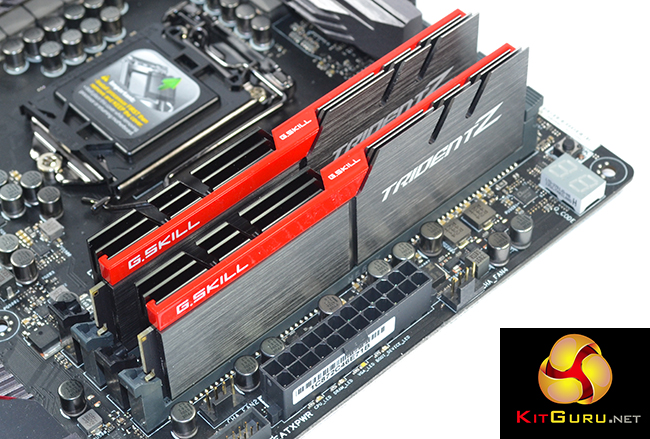
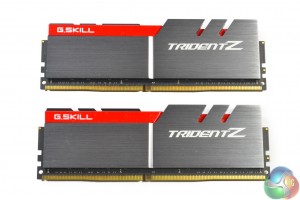
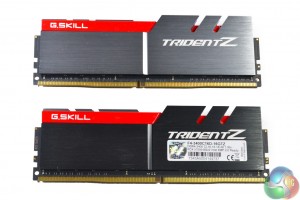
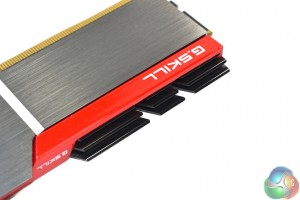
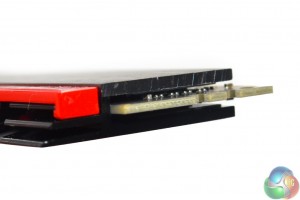
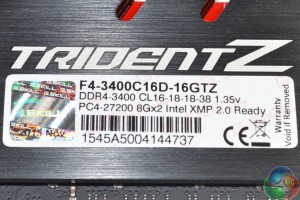
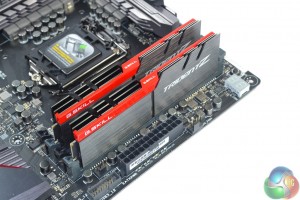
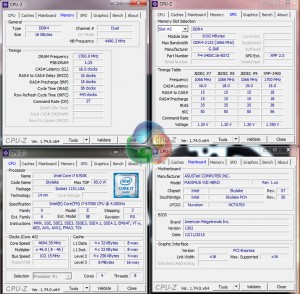
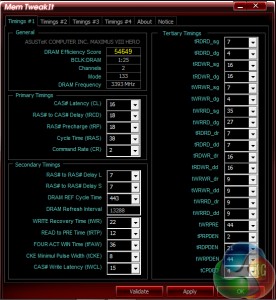
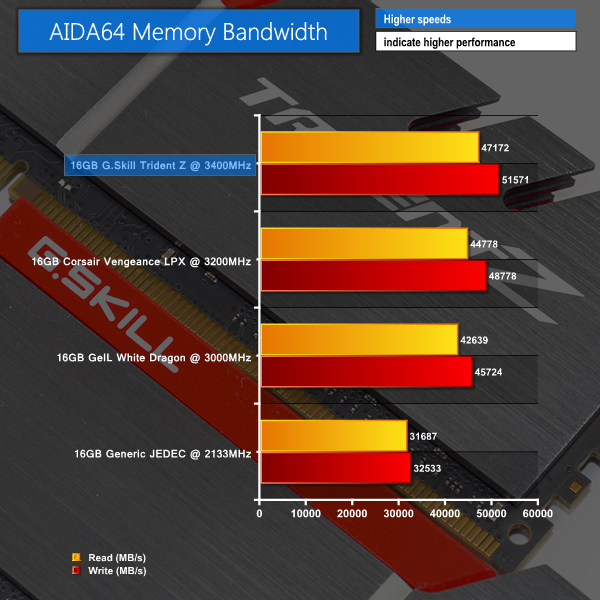
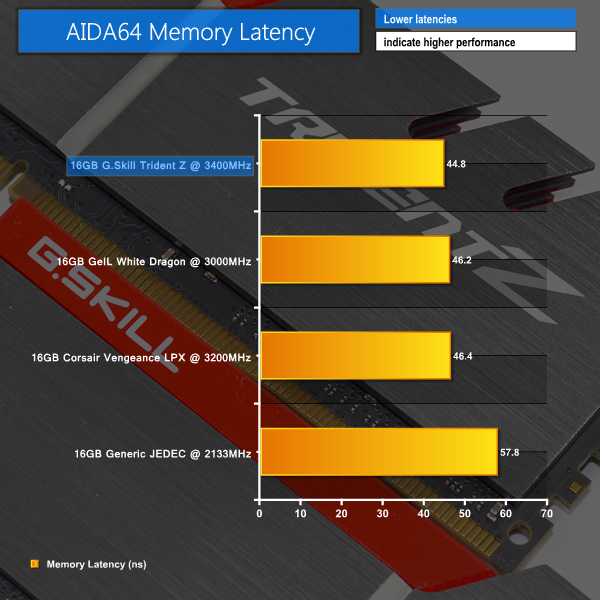
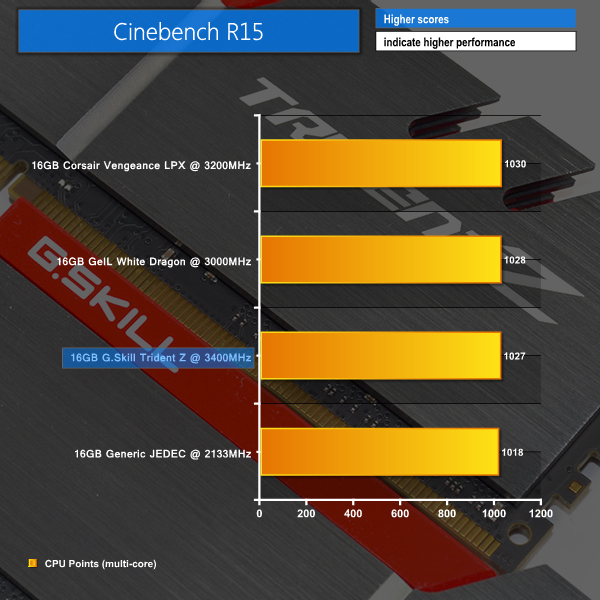
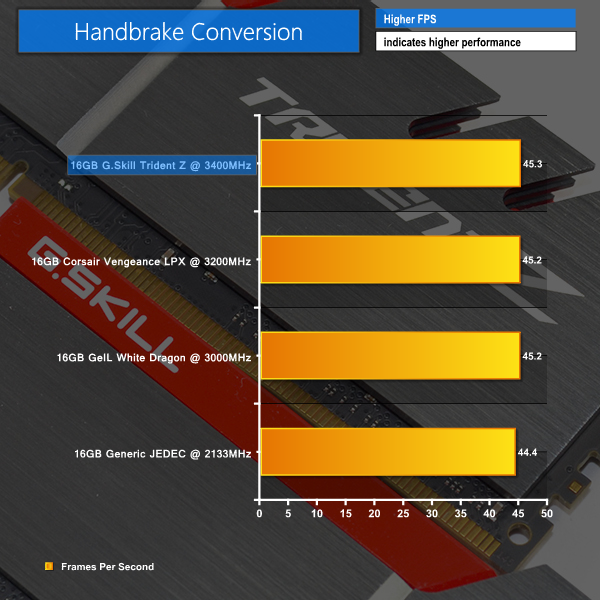
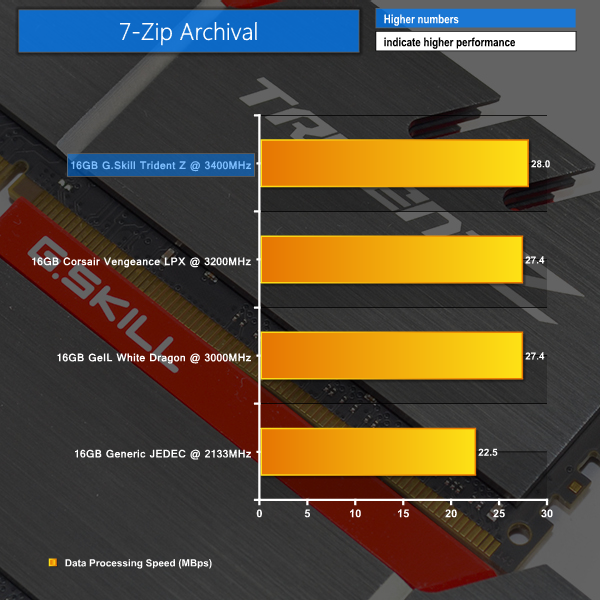




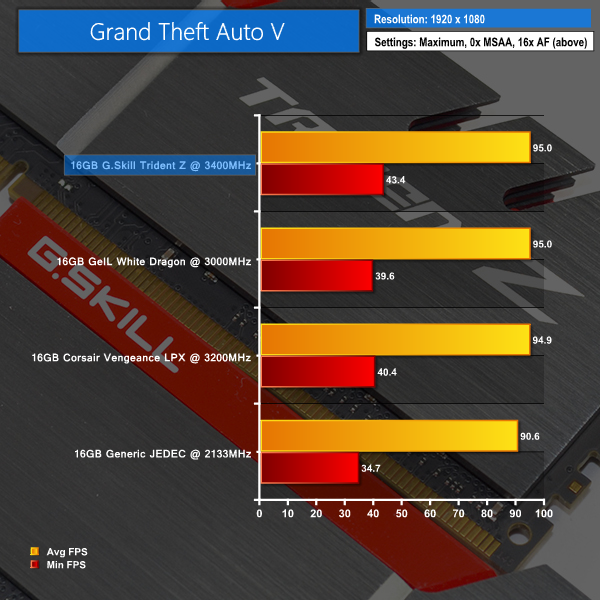
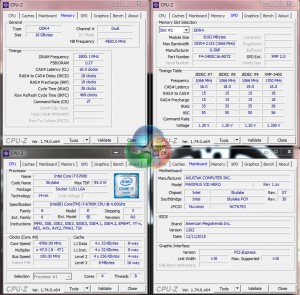
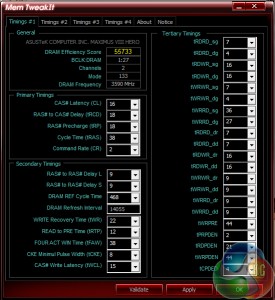
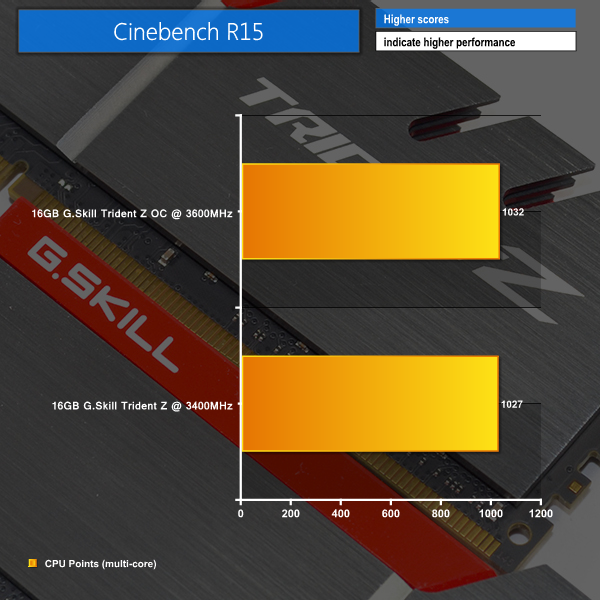
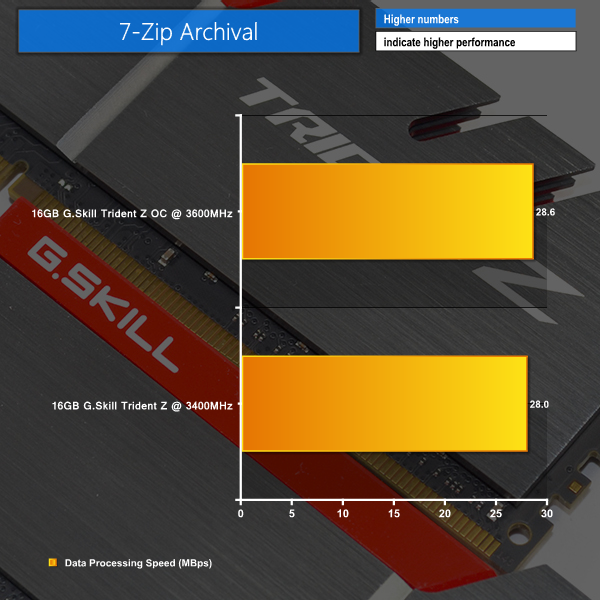
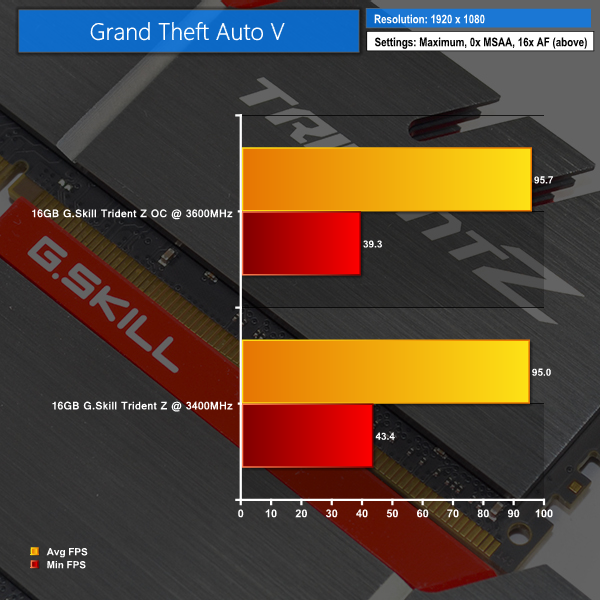

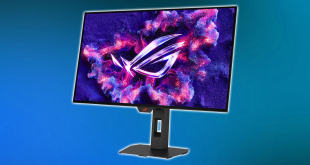
Had to use timings 17-18-18-36 to get 3600MHz stable…
Do not buy .. any of these.. it’s for INTEL.
For amd … coming out – https://www.guru3d.com/news-story/g-skill-launchs-flare-x-series-and-ryzen-optimized-fortis-series-ddr4.html
FLARE X .. etc.